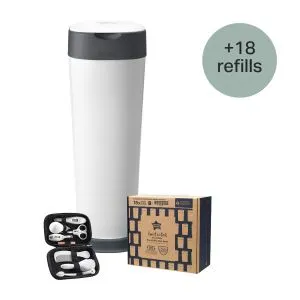
Ultimate XL Nappy Disposal Bundle with 18 Refills
Bundle & Save 40%
Subscription orders can be cancelled at anytime. Free delivery on all subsequent subscription orders. Find out more about subscriptions.
They’re easy and fuss free
Your products are automatically sent to you
You save up to 10% when you sign up for a subscription
You can cancel at any time

While it's mild for some babies, teething can trigger some symptoms that are difficult to manage. It can be a frustrating time for both little ones and their parents alike, especially because young babies can't talk to communicate that they're in pain or feel uncomfortable as their first teeth grow in.
If you're in the midst of teething stress right now or think your little one is about to reach their next development milestone and start teething, try not to worry! Although it's a difficult phase, it will pass, and there are some tell-tale signs that you can look out for to know when your little one may need soothing and some extra cuddles and comfort.
Let's run through when teething starts, what the first signs of teething usual are, and how you can safely check if your baby has started teething.
Explore the Range
You can look for the following signs and teething symptoms to know for sure if their first ever tooth is due to make an appearance:
According to NCT, other symptoms parents sometimes associate with teething but aren't generally linked to teething include...
Fever and symptoms such as body rashes, vomiting and diarrhoea, rashes, and vomiting are not likely to be linked to teething, so you should always talk to your doctor if your baby is experiencing these.
To know for sure if your baby is teething, you can...